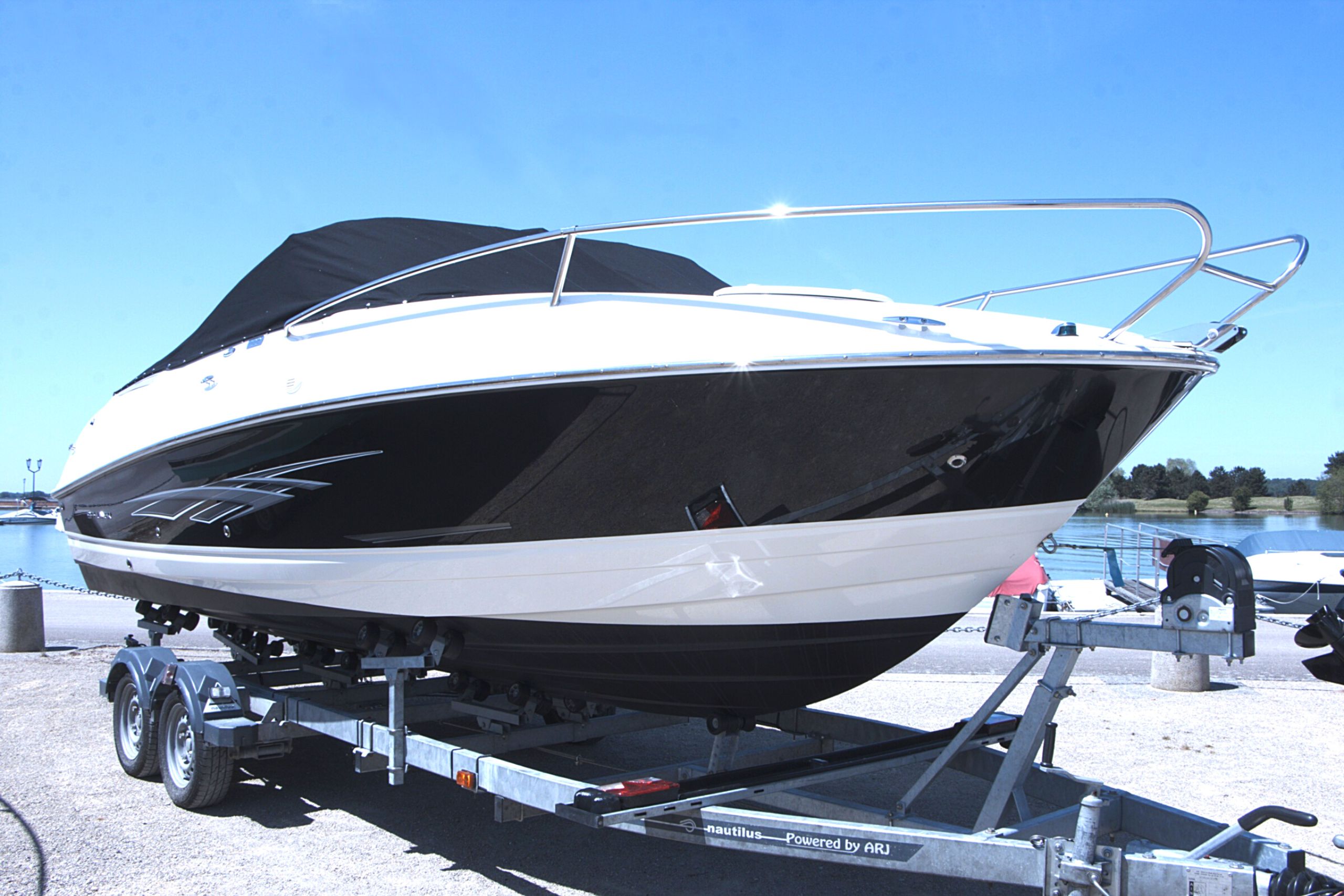Winter Boat Storage That Reduces Rust and Corrosion Risk

Winter Boat Storage That Reduces Rust and Corrosion Risk
The best part of having a boat is being out on the water, but winter boat storage isn’t something any boat owner can afford to sail mindlessly past.
About 14 million Americans own 25 million recreational boats, according to a recent survey released by the U.S. Coast Guard. That figure includes not just traditional motorized vessels, but kayaks, personal watercraft, airboats, canoes, sailboats, etc. If we’re just talking about registered vessels, the tally is roughly 12 million (as of 2022).
While some boaters have the luxury of year-round boating (looking at you, Floridians), chances are that unless you have a houseboat, you’ll be storing your vessel at some point. When it comes to winter boat storage, most seafarers opt for dry storage solutions. There’s a significant benefit to giving your boat a break from direct exposure to the elements – particularly corrosive aspects like moisture/humidity, saltwater, ultraviolet light, marine life growth, and hull osmosis. Even pulling your watercraft out for a few weeks or months at a time can go a long way toward extending its fresh look and lifespan.
Types of Wet Storage Boat Corrosion
Common types of corrosion that occur with boats left in the water:
- Rust. This is a unique chemical process that occurs when iron alloys come into contact with water/moisture/humidity and oxygen. Parts of a boat that can be made of iron or iron alloys, such as steel and aluminum. These materials are stronger and better able to withstand heat than most. Other types of metals can be similarly corroded when they’re in contact with humidity and air. These generally require a substantial protective coating if they’re going to be used in boat parts – especially one that directly touches the water.
- Galvanic Corrosion. This type of corrosion occurs when dissimilar metals come in contact with an electrolyte, such as surrounding water. These metals must be properly insulated when used as parts of a boat.
- Stray Current Corrosion. This is when electrical current flows through the water and passes through the boat’s metal components, resulting in corrosion. This can be caused by improperly-wired electrical systems on your boat – or even other boats in the water nearby.
- Crevice Corrosion. This happens in those tiny, enclosed spaces where stagnant water gets trapped. Tight joints, hull fittings – really anywhere on a boat with small gaps is vulnerable to crevice corrosion.
Knot Today, Rust!
Dry boat storage is generally recommended for winter boat storage, even if you don’t live in colder climes. (If you do choose to keep your boat in the water year-round, you’re committing to the need for more repairs and maintenance.)
That said, even dry boat storage has its risks. These include atmospheric corrosion, condensation corrosion, and biological corrosion. Having a solid boat cover is smart, but that isn’t a catch-all solution.
Freedom Boat Club recommends prepping your boat for winter storage by:
- Cleaning and inspecting your vessel. Remove grime from the interior and exterior, starting at the bow and working your way toward the stern – making sure to get into all those crevices where sand, dirt, and debris can hide. Inspect rigging for wear or damage. If you notice any dents or cracks in the fiberglass or gel coating, fix those with a high-quality marine-grade epoxy resin filler.
- Properly secure and remove your batteries. Make sure there’s no corrosion in the terminals, as this can hinder their ability to maintain a charge once you remove your boat from storage. Check their temperature; this will give you an idea about whether you’ll likely need to replace them come spring. If all looks well, disconnect the cables and put them on a storage rack.
- Reduce the risk of moisture. This is probably the biggest threat to your boat during off-season storage. After you thoroughly wash and rinse your watercraft, you need to air it out and make sure it’s completely dry. Take all the drain plugs out, check behind the lockers and bulkheads, and open the onboard freshwater faucets so they can drain completely. If there’s any part that isn’t drying fast enough, take a dry towel to it.
- Use a cover specifically designed for boats. Such a cover will be designed as resistant to water, weather, and UV damage.
- Prioritize corrosion protection. All of these other measures will lower the risk of boat corrosion and boat rust, but they won’t eliminate it entirely. Taking the extra step of using a vapor corrosion inhibitor (VCI) can go a long way toward keeping your vessel in great shape.
Zerust VCI capsules for winter boat storage will protect against not just rust but other types of corrosion while your boat is being stored. These capsules coat the metal surfaces of the boat within an enclosed space with an invisible, non-toxic layer of corrosion protection. There are various types that protect in a different size enclosed spaces of 1-to-6-feet for between 1 and 2 years.
If you have questions about the number and size of vapor corrosion inhibiting capsules you’ll need for your boat, our corrosion prevention experts are happy to provide you with tips.
Additional Resources:
Maintenance tips for your boat trailer, May 2019, Allstate
More Blog Entries:
Tips to Prevent Boat Trailer Rust and Corrosion, April 15, 2023, Winter Boat Storage Rust Prevention Blog
- Categorized: Rust Prevention Tips, Storage, Winter Products
- Tagged: boat rust prevention, corrosion prevention, prevent boat rust, rust prevention, winter boat storage




